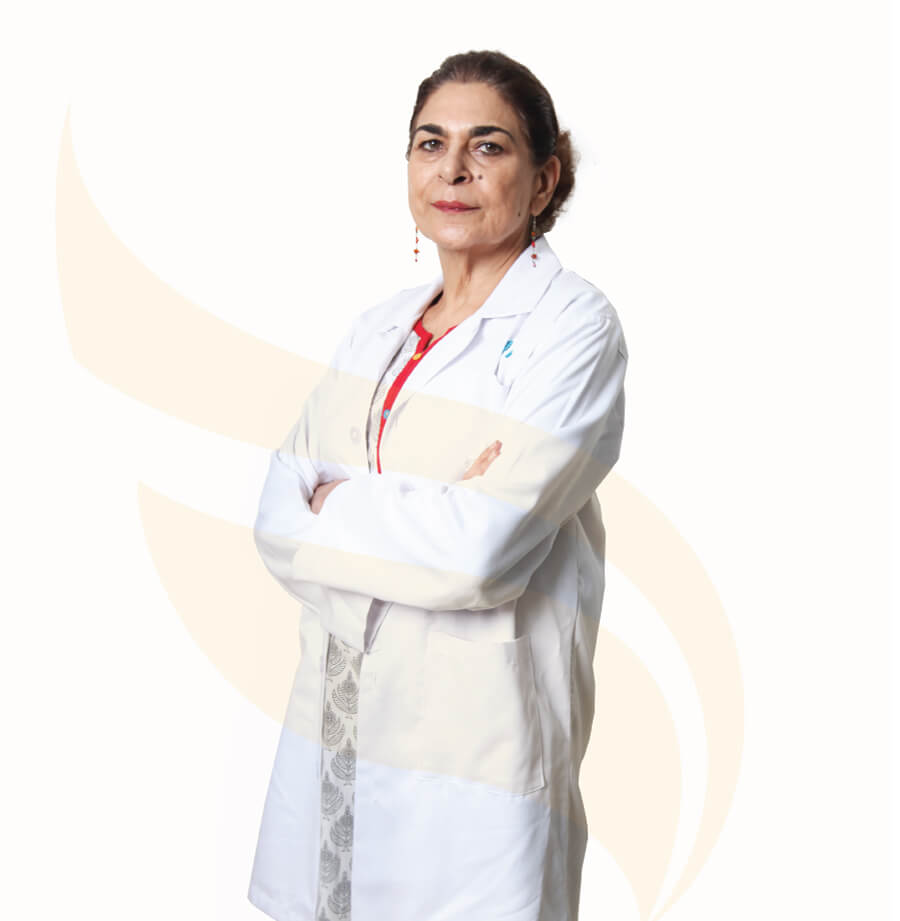Could not find what you are looking for?
- Treatments & Procedures
- Pediatric Neurosurgery (Hydrocephalus)- Types, Procedure, Cost In India, Risks, Recovery and Benefits
Pediatric Neurosurgery (Hydrocephalus)- Types, Procedure, Cost in India, Risks, Recovery and benefits
Best Hospital for Pediatric Neurosurgery (Hydrocephalus) in India
What is Pediatric Neurosurgery (Hydrocephalus)?
Pediatric neurosurgery, particularly concerning hydrocephalus, is a specialized field that focuses on the surgical treatment of children suffering from this condition. Hydrocephalus, often referred to as "water on the brain," is characterized by an abnormal accumulation of cerebrospinal fluid (CSF) within the ventricles of the brain. This buildup can lead to increased intracranial pressure, which can cause a range of neurological issues and developmental delays in children.
The primary purpose of pediatric neurosurgery for hydrocephalus is to restore the normal flow and absorption of cerebrospinal fluid, thereby alleviating pressure on the brain. The procedure aims to prevent further brain damage and improve the child’s quality of life. Hydrocephalus can be congenital, meaning it is present at birth, or acquired due to factors such as infections, tumors, or traumatic brain injuries. The surgical intervention is crucial for managing these conditions effectively.
During the procedure, a neurosurgeon may place a shunt system, which is a flexible tube that diverts excess cerebrospinal fluid from the brain to another part of the body, typically the abdominal cavity, where it can be absorbed. This intervention is vital for children diagnosed with hydrocephalus, as it can significantly improve their developmental outcomes and overall health.
Why is Pediatric Neurosurgery (Hydrocephalus) Done?
Pediatric neurosurgery for hydrocephalus is typically recommended when a child exhibits symptoms that indicate increased intracranial pressure or when diagnostic imaging confirms the presence of hydrocephalus. Common symptoms that may lead to this procedure include:
- Head Enlargement: In infants, an unusually large head circumference can be a sign of hydrocephalus. This occurs because the skull bones have not yet fused, allowing for expansion as fluid accumulates.
- Developmental Delays: Children with hydrocephalus may experience delays in reaching developmental milestones, such as sitting up, walking, or speaking.
- Irritability and Lethargy: Increased pressure in the brain can lead to irritability, excessive sleepiness, or a general lack of energy in infants and young children.
- Vomiting: Persistent vomiting, especially when accompanied by other symptoms, can indicate increased intracranial pressure.
- Seizures: Hydrocephalus can lead to seizures due to the pressure exerted on the brain.
- Changes in Vision: Children may experience blurred or double vision, or they may have difficulty focusing, which can be a result of pressure on the optic nerves.
When these symptoms are present, healthcare providers may recommend imaging studies, such as an ultrasound, CT scan, or MRI, to confirm the diagnosis of hydrocephalus. If the imaging reveals significant fluid accumulation and associated symptoms, pediatric neurosurgery becomes a necessary intervention to prevent further complications.
Indications for Pediatric Neurosurgery (Hydrocephalus)
Several clinical situations and diagnostic findings can indicate the need for pediatric neurosurgery for hydrocephalus. These include:
- Congenital Hydrocephalus: Infants born with conditions such as spina bifida or aqueductal stenosis may develop hydrocephalus. Early diagnosis and intervention are crucial to prevent neurological damage.
- Acquired Hydrocephalus: Conditions such as infections (e.g., meningitis), brain tumors, or traumatic brain injuries can lead to the development of hydrocephalus. If these conditions result in significant fluid accumulation, surgical intervention may be necessary.
- Symptoms of Increased Intracranial Pressure: As mentioned earlier, symptoms such as head enlargement, developmental delays, irritability, and vomiting can indicate the need for surgery. If these symptoms are severe or worsening, it may prompt immediate surgical evaluation.
- Imaging Findings: Diagnostic imaging that shows enlarged ventricles or other signs of hydrocephalus can lead to surgical recommendations. The degree of ventricular enlargement and the presence of associated symptoms are critical factors in determining the need for surgery.
- Failure of Conservative Management: In some cases, hydrocephalus may be managed initially with medications or other non-surgical approaches. However, if these methods fail to control symptoms or if the condition worsens, surgical intervention may be warranted.
- Shunt Malfunction: For children who have previously undergone shunt placement, any signs of malfunction—such as sudden changes in behavior, increased head size, or new neurological symptoms—may necessitate surgical evaluation and potential revision of the shunt system.
In summary, pediatric neurosurgery for hydrocephalus is indicated when a child exhibits symptoms of increased intracranial pressure, has imaging findings consistent with hydrocephalus, or has underlying conditions that predispose them to this condition. Early intervention is essential to prevent long-term neurological damage and to improve the child’s overall quality of life.
Types of Pediatric Neurosurgery (Hydrocephalus)
While there are various approaches to managing hydrocephalus, the most common type of pediatric neurosurgery involves the placement of a shunt system. This procedure can be categorized into a few specific techniques:
- Ventriculoperitoneal (VP) Shunt: This is the most common type of shunt used in pediatric neurosurgery for hydrocephalus. A VP shunt diverts cerebrospinal fluid from the ventricles of the brain to the peritoneal cavity in the abdomen. This allows the fluid to be absorbed by the body, relieving pressure on the brain.
- Ventriculoatrial (VA) Shunt: In some cases, a VA shunt may be used, which directs cerebrospinal fluid from the ventricles to the right atrium of the heart. This approach is less common but may be indicated in specific clinical situations.
- Lumboperitoneal (LP) Shunt: An LP shunt may be utilized in cases where cerebrospinal fluid needs to be diverted from the lumbar region of the spine to the peritoneal cavity. This technique is less frequently used for hydrocephalus but can be effective in certain scenarios.
- Endoscopic Third Ventriculostomy (ETV): In some cases, particularly when hydrocephalus is caused by obstruction, an endoscopic third ventriculostomy may be performed. This minimally invasive procedure involves creating a small opening in the floor of the third ventricle to allow cerebrospinal fluid to bypass the obstruction and flow freely.
Each of these techniques has its indications, benefits, and potential risks. The choice of procedure depends on the underlying cause of hydrocephalus, the child’s overall health, and the surgeon’s expertise. The goal of any surgical intervention is to effectively manage the condition while minimizing complications and promoting the best possible outcomes for the child.
In conclusion, pediatric neurosurgery for hydrocephalus is a critical intervention for children suffering from this condition. Understanding the procedure, its indications, and the types of surgical approaches available can empower parents and caregivers to make informed decisions regarding their child’s health. Early diagnosis and intervention are key to ensuring the best possible outcomes for children with hydrocephalus.
Contraindications for Pediatric Neurosurgery (Hydrocephalus)
While pediatric neurosurgery for hydrocephalus can be life-changing, certain conditions or factors may make a patient unsuitable for the procedure. Understanding these contraindications is crucial for parents and caregivers to make informed decisions about their child's health.
- Severe Medical Conditions: Children with severe, uncontrolled medical conditions such as heart disease, respiratory issues, or significant metabolic disorders may not be ideal candidates for surgery. These conditions can increase the risk of complications during and after the procedure.
- Infection: If a child has an active infection, particularly in the central nervous system or surrounding areas, surgery may be postponed until the infection is resolved. This is to prevent the spread of infection and ensure a safer surgical environment.
- Developmental Delays: Children with significant developmental delays or neurological impairments may have a different risk profile. Their overall health and ability to recover from surgery are considered before proceeding.
- Anatomical Abnormalities: Certain anatomical abnormalities in the brain or spinal cord may complicate the surgery. If imaging studies reveal such issues, the surgical team may recommend alternative treatments or a more cautious approach.
- Parental Concerns: Sometimes, parental anxiety or concerns about the procedure can influence the decision. It’s essential for parents to discuss their worries with the medical team, as emotional readiness can impact recovery.
- Previous Surgeries: If a child has had previous surgeries that complicate the current condition, such as scarring or altered anatomy, this may affect the decision to proceed with neurosurgery.
- Age Considerations: Very young infants may have different risks associated with anesthesia and surgery. The surgical team will evaluate the child’s age and overall health before making a recommendation.
- Non-compliance: If there is a concern that the child or family may not follow post-operative care instructions, this could be a contraindication. Adherence to follow-up appointments and care is crucial for successful outcomes.
Understanding these contraindications helps ensure that the decision to proceed with pediatric neurosurgery for hydrocephalus is made with the child’s best interests in mind.
How to Prepare for Pediatric Neurosurgery (Hydrocephalus)
Preparing for pediatric neurosurgery can feel overwhelming, but knowing what to expect can ease anxiety for both parents and children. Here’s a guide to help you prepare effectively.
- Pre-Procedure Instructions:
- Fasting: Your child may need to fast for a certain period before the surgery. Typically, this means no food or drink after midnight before the procedure. Follow the specific instructions given by the surgical team.
- Medication Review: Discuss all medications your child is taking with the doctor. Some medications may need to be adjusted or temporarily stopped before surgery.
- Tests and Evaluations:
- Imaging Studies: Prior to surgery, your child may undergo imaging tests such as MRI or CT scans to provide detailed information about the brain's structure and the extent of hydrocephalus.
- Blood Tests: Routine blood tests may be required to check for any underlying health issues and to ensure your child is fit for anesthesia.
- Pre-Operative Consultation:
- Meet with the neurosurgeon and anesthesiologist to discuss the procedure, risks, and what to expect. This is a great time to ask any questions you may have.
- Discuss your child’s medical history, allergies, and any previous surgeries to ensure the surgical team has a complete understanding of your child’s health.
- Emotional Preparation:
- Talk to your child about the surgery in a way that is appropriate for their age. Explain what will happen and reassure them that they will be well taken care of.
- Consider bringing a comfort item, such as a favorite toy or blanket, to help ease anxiety on the day of the surgery.
- Logistics:
- Arrange for transportation to and from the hospital. It’s also wise to plan for a stay in the hospital, as recovery may require monitoring.
- Prepare for post-operative care at home, including any necessary supplies or medications.
- Support System:
- Ensure you have a support system in place. Family and friends can help with care and provide emotional support during this time.
By following these preparation steps, you can help ensure that your child is ready for pediatric neurosurgery for hydrocephalus, making the process smoother for everyone involved.
Pediatric Neurosurgery (Hydrocephalus): Step-by-Step Procedure
Understanding the step-by-step process of pediatric neurosurgery for hydrocephalus can help alleviate fears and provide clarity on what to expect. Here’s a breakdown of the procedure.
- Before the Procedure:
- Upon arrival at the hospital, your child will be checked in and taken to a pre-operative area. Here, nurses will monitor vital signs and prepare your child for surgery.
- An intravenous (IV) line will be placed to administer fluids and medications. The anesthesiologist will meet with you to discuss the anesthesia plan and answer any questions.
- Anesthesia:
- Your child will receive general anesthesia, which means they will be asleep and pain-free during the surgery. The anesthesiologist will carefully monitor your child’s vital signs throughout the procedure.
- Surgical Procedure:
- The neurosurgeon will make a small incision in the scalp and create a small opening in the skull to access the brain. This is typically done using advanced imaging techniques to ensure precision.
- A catheter (a thin tube) will be inserted into the ventricles of the brain to drain excess cerebrospinal fluid (CSF). This catheter is connected to a valve system that regulates the flow of CSF and prevents it from accumulating again.
- The surgeon will then close the incision with sutures or staples, ensuring that the area is secure.
- Post-Operative Care:
- After the surgery, your child will be taken to the recovery room, where they will be closely monitored as they wake up from anesthesia. This is a critical time to ensure that they are stable and comfortable.
- Pain management will be provided, and your child may receive fluids and medications through the IV.
- Once your child is stable, they will be moved to a hospital room for further recovery. The length of stay can vary, but many children are able to go home within a few days.
- Follow-Up:
- After discharge, follow-up appointments will be scheduled to monitor your child’s recovery and the function of the shunt. It’s essential to attend these appointments to ensure everything is working correctly.
By understanding the step-by-step process of pediatric neurosurgery for hydrocephalus, parents can feel more prepared and confident in their child’s care.
Risks and Complications of Pediatric Neurosurgery (Hydrocephalus)
Like any surgical procedure, pediatric neurosurgery for hydrocephalus carries certain risks and potential complications. It’s important to be aware of these, even though many children undergo the procedure successfully.
Common Risks:
- Infection: There is a risk of infection at the surgical site or within the central nervous system. This is why antibiotics may be administered before and after surgery.
- Bleeding: Some bleeding can occur during or after the procedure. While most cases are minor, significant bleeding may require additional intervention.
- Shunt Malfunction: The shunt system may become blocked or malfunction, leading to a recurrence of hydrocephalus symptoms. Regular follow-up is essential to monitor shunt function.
Less Common Risks:
- Anesthesia Complications: Although rare, complications from anesthesia can occur, particularly in children with underlying health issues.
- Neurological Changes: Some children may experience changes in neurological function, such as weakness or coordination issues, although these are typically temporary.
- Seizures: Post-operative seizures can occur, especially in children with a history of seizures or neurological issues.
Rare Risks:
- Cerebrospinal Fluid Leak: A leak can occur at the surgical site, which may require additional treatment.
- Long-term Shunt Dependence: Some children may require lifelong monitoring and adjustments to their shunt system, which can be a long-term commitment for families.
Emotional and Psychological Impact:
- Children may experience anxiety or emotional changes following surgery. It’s important to provide support and seek professional help if needed.
While the risks associated with pediatric neurosurgery for hydrocephalus are important to consider, many children benefit significantly from the procedure. Open communication with the healthcare team can help address concerns and ensure the best possible outcomes for your child.
Recovery After Pediatric Neurosurgery (Hydrocephalus)
Recovery from pediatric neurosurgery for hydrocephalus is a crucial phase that requires careful monitoring and support. The expected recovery timeline can vary based on the individual child and the specifics of the surgery performed. Generally, children may stay in the hospital for a few days to a week post-surgery, depending on their condition and how well they respond to the procedure.
Expected Recovery Timeline
- Hospital Stay: Most children will remain in the hospital for 2 to 7 days. During this time, healthcare providers will monitor vital signs, neurological status, and the function of the shunt (if placed).
- Initial Recovery: The first few days after surgery are critical. Children may experience some pain, swelling, or discomfort, which can be managed with medications prescribed by the healthcare team.
- Follow-Up Appointments: After discharge, follow-up visits are typically scheduled within a week or two to assess recovery and shunt function. Regular check-ups may continue for several months.
Aftercare Tips
- Pain Management: Administer prescribed pain relief medications as directed. Monitor your child for any signs of increased pain or discomfort.
- Wound Care: Keep the surgical site clean and dry. Follow the surgeon's instructions on how to care for the incision.
- Activity Restrictions: Limit physical activities for a few weeks. Avoid rough play, sports, or any activities that could lead to head injury.
- Hydration and Nutrition: Encourage your child to drink plenty of fluids and eat a balanced diet to support healing.
- Watch for Symptoms: Be vigilant for any signs of complications, such as fever, excessive swelling, or changes in behavior. Contact your healthcare provider if you notice anything concerning.
Resuming Normal Activities
Most children can gradually return to their normal activities within a few weeks, but this can vary. Light activities can typically resume after about 2 weeks, while more vigorous activities may take longer, depending on the child's recovery progress and the surgeon's advice.
Benefits of Pediatric Neurosurgery (Hydrocephalus)
Pediatric neurosurgery for hydrocephalus offers numerous benefits that significantly improve a child's health and quality of life. Here are some key health improvements and outcomes associated with this procedure:
- Reduction of Symptoms: The primary goal of surgery is to alleviate symptoms caused by increased intracranial pressure, such as headaches, nausea, and vision problems. Successful surgery can lead to a significant reduction in these symptoms.
- Improved Cognitive Function: By addressing the underlying issue of hydrocephalus, children often experience improvements in cognitive function. This can enhance their ability to learn, concentrate, and engage in social interactions.
- Enhanced Quality of Life: With the alleviation of symptoms and improved cognitive abilities, children can participate more fully in daily activities, including school, play, and social interactions, leading to a better overall quality of life.
- Long-Term Health Outcomes: Early intervention and effective management of hydrocephalus can prevent long-term complications, such as developmental delays or neurological deficits. Regular follow-ups ensure that any issues are addressed promptly.
- Family Support: The positive outcomes of surgery not only benefit the child but also provide relief and support to families, allowing them to focus on nurturing their child's development and well-being.
Pediatric Neurosurgery (Hydrocephalus) vs. Endoscopic Third Ventriculostomy (ETV)
While shunt placement is the most common procedure for treating hydrocephalus, endoscopic third ventriculostomy (ETV) is an alternative that some patients may consider. Below is a comparison of these two procedures:
| Feature | Shunt Placement | Endoscopic Third Ventriculostomy (ETV) |
|---|---|---|
| Procedure Type | Involves placing a shunt to drain excess cerebrospinal fluid (CSF) | Creates an opening in the third ventricle to allow CSF to flow freely |
| Invasiveness | More invasive due to shunt placement | Less invasive, performed endoscopically |
| Long-Term Management | Requires regular monitoring and potential revisions | May not require long-term management if successful |
| Risks | Infection, shunt malfunction | Risk of bleeding, infection, or failure of the procedure |
| Recovery Time | Longer recovery due to shunt placement | Generally quicker recovery with less hospital time |
| Ideal Candidates | Children with obstructive hydrocephalus | Children with specific types of hydrocephalus, such as aqueductal stenosis |
Cost of Pediatric Neurosurgery (Hydrocephalus) in India
The cost of pediatric neurosurgery for hydrocephalus in India typically ranges from ₹1,00,000 to ₹3,00,000. Price can vary based on several key factors:
- Hospital: Different hospitals have varying pricing structures. Renowned institutions like Apollo Hospitals may offer comprehensive care and advanced facilities, which can influence the overall cost.
- Location: The city and region where the Pediatric Neurosurgery (Hydrocephalus) is performed can affect costs due to differences in living expenses and healthcare pricing.
- Room Type: The choice of accommodation (general ward, semi-private, private, etc.) can significantly impact the total cost.
- Complications: Any complications during or after the procedure can lead to additional expenses.
At Apollo Hospitals, we prioritize transparent communication and personalized care plans. Apollo Hospitals is the best hospital for Pediatric Neurosurgery (Hydrocephalus) in India because of our trusted expertise, advanced infrastructure, and consistent focus on patient outcomes.
We encourage prospective patients seeking a Pediatric Neurosurgery (Hydrocephalus) in India to contact us directly for detailed information about the procedure cost and assistance with financial planning.
With Apollo Hospitals, you get access to:
- Trusted medical expertise
- Comprehensive aftercare services
- Excellent value and quality care
This makes Apollo Hospitals a preferred choice for Pediatric Neurosurgery (Hydrocephalus) in India.
FAQs About Pediatric Neurosurgery (Hydrocephalus)
What should my child eat before surgery?
It’s essential to follow your surgeon's dietary instructions before surgery. Generally, children may need to avoid solid foods for several hours before the procedure. Clear liquids may be allowed up to a few hours prior. Always confirm with your healthcare provider.
Can my child take their regular medications before surgery?
Discuss all medications with your child's surgeon. Some medications may need to be adjusted or temporarily stopped before surgery, especially blood thinners or medications that affect anesthesia.
What are the signs of infection after surgery?
Watch for symptoms such as fever, increased redness or swelling at the incision site, or unusual discharge. If you notice any of these signs, contact your healthcare provider immediately.
How can I help my child manage pain after surgery?
Administer prescribed pain medications as directed. Comfort measures such as a quiet environment, gentle distractions, and cuddling can also help ease discomfort.
When can my child return to school?
Most children can return to school within 2 to 4 weeks after surgery, depending on their recovery. Consult with your child's healthcare provider for personalized advice.
Are there any activity restrictions after surgery?
Yes, children should avoid strenuous activities, sports, and rough play for several weeks post-surgery. Gradually reintroduce activities as advised by the healthcare team.
What follow-up care is needed after surgery?
Follow-up appointments are crucial to monitor recovery and shunt function. Your child's doctor will schedule these visits and provide specific instructions for care.
How can I support my child emotionally after surgery?
Provide reassurance, listen to their concerns, and encourage open communication. Engaging in gentle activities together can help them feel more secure and supported.
What if my child experiences mood changes after surgery?
Mood changes can occur after surgery due to pain, medication, or the stress of the procedure. If these changes persist or worsen, consult your child's healthcare provider for guidance.
Is physical therapy necessary after surgery?
Physical therapy may be recommended based on your child's condition and recovery progress. It can help improve strength, coordination, and overall function.
Can my child participate in sports after recovery?
After a thorough evaluation and clearance from the healthcare provider, children may gradually return to sports. Contact sports may require additional precautions.
What should I do if my child has a headache after surgery?
Mild headaches can be common after surgery. Administer pain relief as prescribed and ensure your child is well-hydrated. If headaches persist or worsen, contact the doctor.
How can I ensure my child stays hydrated after surgery?
Encourage your child to drink fluids regularly. Offer water, clear broths, or electrolyte solutions. Monitor their intake, especially if they are reluctant to drink.
What are the long-term effects of hydrocephalus surgery?
Many children experience significant improvements in symptoms and quality of life. Regular follow-ups are essential to monitor for any potential complications or changes.
Can hydrocephalus recur after surgery?
While surgery aims to manage hydrocephalus effectively, there is a possibility of recurrence or complications. Regular monitoring and follow-up care are crucial for early detection.
What should I do if my child is not improving after surgery?
If you notice any concerning symptoms or lack of improvement, contact your child's healthcare provider immediately for further evaluation and guidance.
Are there any dietary restrictions after surgery?
Generally, there are no specific dietary restrictions after surgery, but a balanced diet is encouraged to support recovery. Consult your healthcare provider for personalized advice.
How can I prepare my child for follow-up appointments?
Explain the purpose of the visit in simple terms, and encourage your child to ask questions. Bring a list of any concerns or observations to discuss with the doctor.
What should I do if my child is anxious about the surgery?
Address their fears by providing age-appropriate information about the procedure. Consider involving them in the preparation process and offer reassurance throughout.
Is it normal for my child to feel tired after surgery?
Yes, fatigue is common after surgery as the body heals. Ensure your child gets plenty of rest and gradually resumes normal activities as they feel able.
Conclusion
Pediatric neurosurgery for hydrocephalus is a vital procedure that can significantly improve a child's health and quality of life. By addressing the underlying issues of hydrocephalus, children can experience relief from symptoms and enhanced cognitive function. If you have concerns or questions about this procedure, it is essential to speak with a medical professional who can provide personalized guidance and support.












